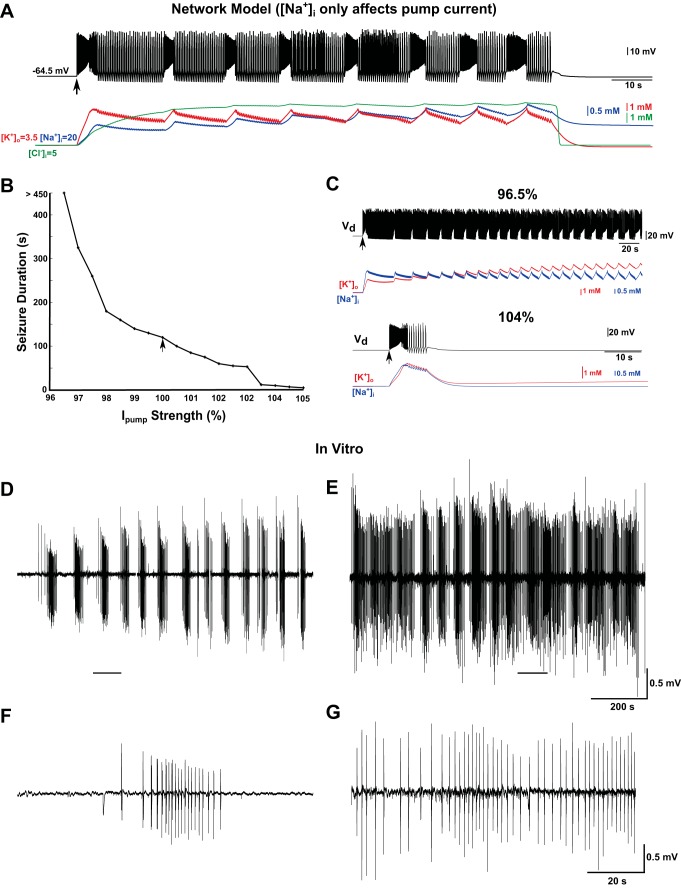Fig. 3.
Na+/K+ pump current contributes to termination of seizure. A: activity in the network model with fixed reversal potential for Na+; the only effect of Na+ is on the Na+/K+ pump current. Top: the curve shows the dendritic membrane voltage of a single representative PY neuron. After brief transient input (marked by a black arrow), the network demonstrated seizure-like activity, followed by alternations between tonic and bursting states. The seizure terminated after ∼120 s. Bottom: plots show time evolution of ion concentrations. B: duration of seizure increased with decreasing strength of Na+/K+ pump current (Ipump). C: dynamics of a single PY neuron for 2 different strengths of the Na+/K+ pump current. Top: 96.5% of the control strength; bottom: 104% of the control strength. Vd, voltage of the dendritic compartment. D: periodic epileptiform activity induced by an increase of [K+]o (10 mM KCl) in vitro. E: bath application of 400 nM STDN in addition to 10 mM KCl inhibited the Na+/K+ pump and increased the duration of epileptiform events. Note almost continuous seizure-like activity. F: 1 epileptiform event (zoom-in from D). G: continuous activity after STDN application (zoom-in from E).

